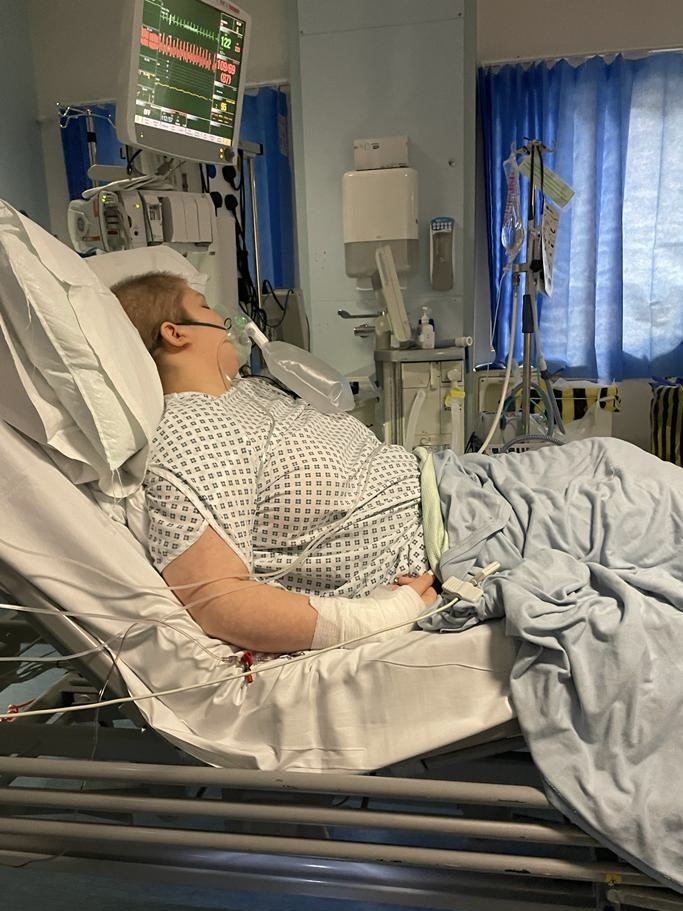Ovarian cancer
Find out about the symptoms of ovarian cancer, how it can affect young people, and how it is diagnosed and treated.
You are viewing: Intro
- Ovarian cancer is getting more common in young people
- It’s harder to diagnose than some other cancers, as the symptoms can be a bit vague
- Symptoms can include pain and bloating, as well as feeling full quickly
- Ovarian cancer is usually diagnosed with a blood test and/or scan
- It can be treated with surgery, chemotherapy or both
What is ovarian cancer?
Ovarian cancer affects the ovaries, which are the organs inside the body which produce eggs and release them to be fertilised by sperm.
Most people who are diagnosed with ovarian cancer are in their 50s or older, and have been through the menopause. But it’s getting more common in teenagers and younger people too.
It can be hard to recognise the early signs of ovarian cancer, because the symptoms are often pretty vague.
Some of them – like bloating and stomach pain – are easy to confuse with period symptoms.
Knowing the signs of ovarian cancer is definitely a good idea, but remember that lots of conditions less serious than cancer can also cause these symptoms.
What are the symptoms of ovarian cancer?
Some signs and symptoms of ovarian cancer can be:
- pain around your pelvis and stomach that isn’t linked to your period,
- feeling bloated a lot, but at times when you haven’t got your period.
- struggling to eat because you feel full quickly.
If you do have these symptoms, it’s worth getting checked out – there’s no such thing as wasting your doctor’s time.
How is ovarian cancer diagnosed?
Your doctor will feel your stomach and pelvis for any lumps or swellings in your ovaries or uterus. They might also do an internal vaginal examination. This is where they will use one or two of their fingers to gently feel inside your vagina. This is to feel for lumps and swellings as well.
For any intimate examination like this you should be offered a chaperone - this means another medical professional will be in the room while you’re having the examination.
If more tests are needed, you might also have a blood test, ultrasound, CT scan, or MRI scan to find out the cause of your symptoms.
The blood test can show up high levels of a protein, called tumour markers, produced by some ovarian cancers, and the ultrasound and CT or MRI scan can help to show lumps and swelling. These scans won’t touch you and won’t cause any pain, but you might have to lie still in a certain position while they are being done.
You can find out more about these techniques in our Getting diagnosed section.
How do you treat ovarian cancer?
Surgery and chemotherapy are the main treatments for ovarian cancer.
If your cancer is diagnosed early enough, you might only need to have surgery to remove the affected ovary and the connected fallopian tube.
If you have more advanced cancer, you might need more extensive surgery, but your doctors will talk this through with you.
Chemotherapy can also be used before and after surgery to target cancerous cells and reduce the risk of cancer coming back.
Will ovarian cancer affect my fertility?
Fertility means the ability to have children.
Treatment for ovarian cancer can mean that your fertility could be affected, this means that getting pregnant might be harder or not possible.
That can be really hard to come to terms with. There are often things you can do to increase your chances of having a family in the future, such as egg preservation.
If your fertility hasn’t been mentioned your treatment team will be happy to talk to you about this and answer any questions. Find our more in our section on fertility.
This page was reviewed in 2024. It will reviewed again in 2027.

PIF TICK accredited information
The Patient Information Forum is the UK membership organisation and network for people working in health information and support. The PIF TICK is the UK-wide Quality Mark for Health Information.

